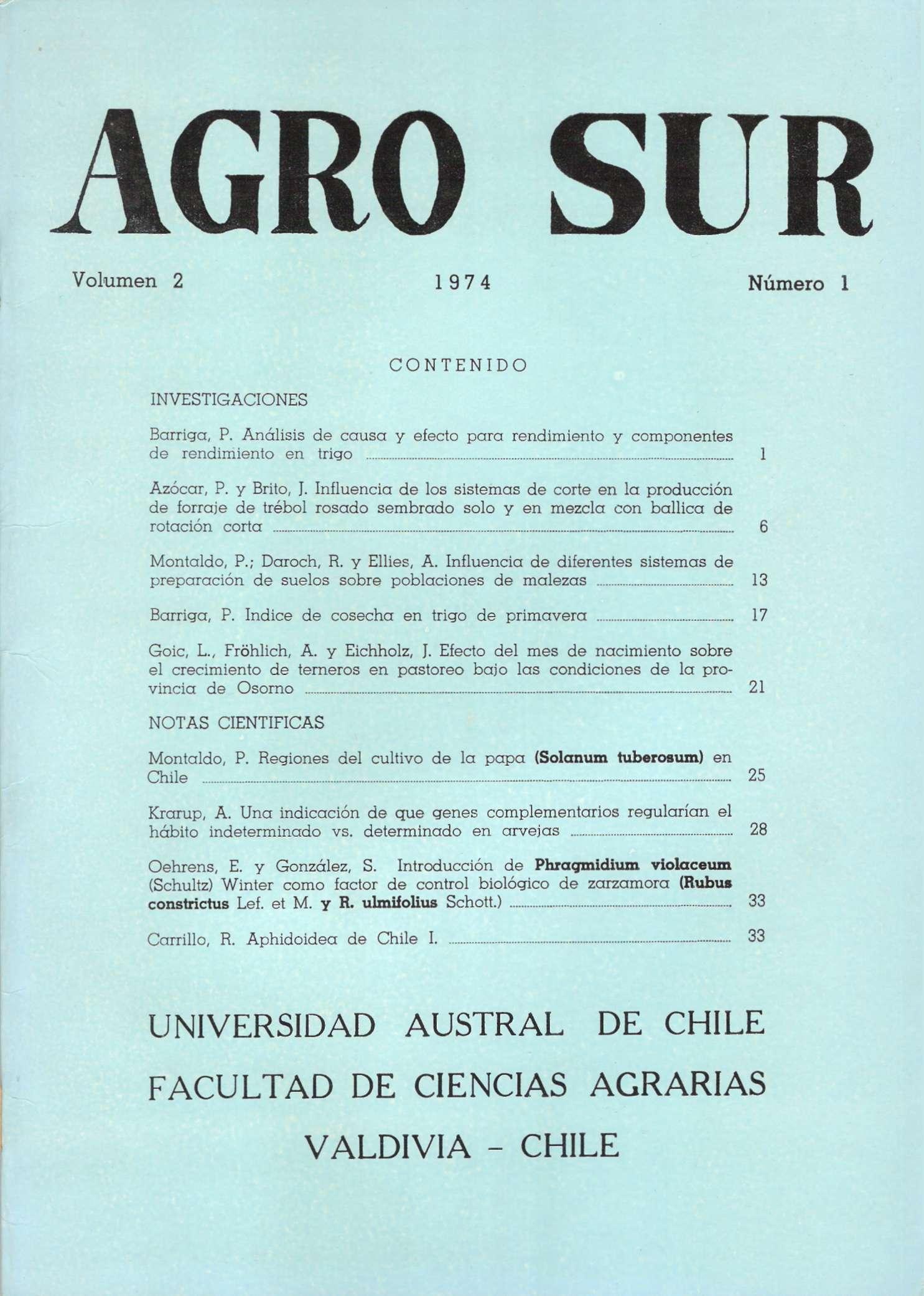INFLUENCIA DE LOS SISTEMAS DE CORTES EN LA PRODUCCION DE FORRAJE DE TREBOL ROSADO, SEMBRADO SOLO Y EN MEZCLA CON BALLICA DE ROTACION CORTA
Main Article Content
Abstract
During 1971-1973 experiments were conducted at the Carillanca Experimental Station (Cautin Province, Chile) to determine the yield potencial of red clover (Trifolium pratense L.) cultivar Quiñequeli under different cutting systems when it was seeded alone or in mixtures with short rotation ryegrass, (Lolium perenne L. x L. multiflorum Lam), cultivar Manawa. The cutting systems were: 1) Cut when plants reached 25 cm heigth, 2) at the tillering stage; 3) when 50% plants were in bloom stage and 4) during the third week of november, january and march. During the first season (1971-72) no differences were observed between the production of red clover and the mixture. The rye-grass and red clover mixture gave the highest dry matter yield per hectare in the second season of utilization (1972-73). The main component of the mixture being rye-grass. The highest yield per hectare was produced in the 50% blooming stage and only one cutting was obtained during the season. In the mixture, no differences were found among the tillage stage cuttings, third week of November, January and March and the 50 percent-blooming stage. The total yield was lower when the cutting at 25 cm was compared with the 50 percent-blooming stage cutting. The vegetative stages of rye-grass and those corresponding to red clover were not coincident with the 50 percent-blooming stage cutting. The red clover population declined continuously jn all treatments and performed independent of the different cutting systems, possibly due to disease or insect damage, throughout the two period of growth under control. The rye-grass population was also constant in density of plants per unit of area. These results were analysed refering to the pasture of the Cautin Province, Chile.

